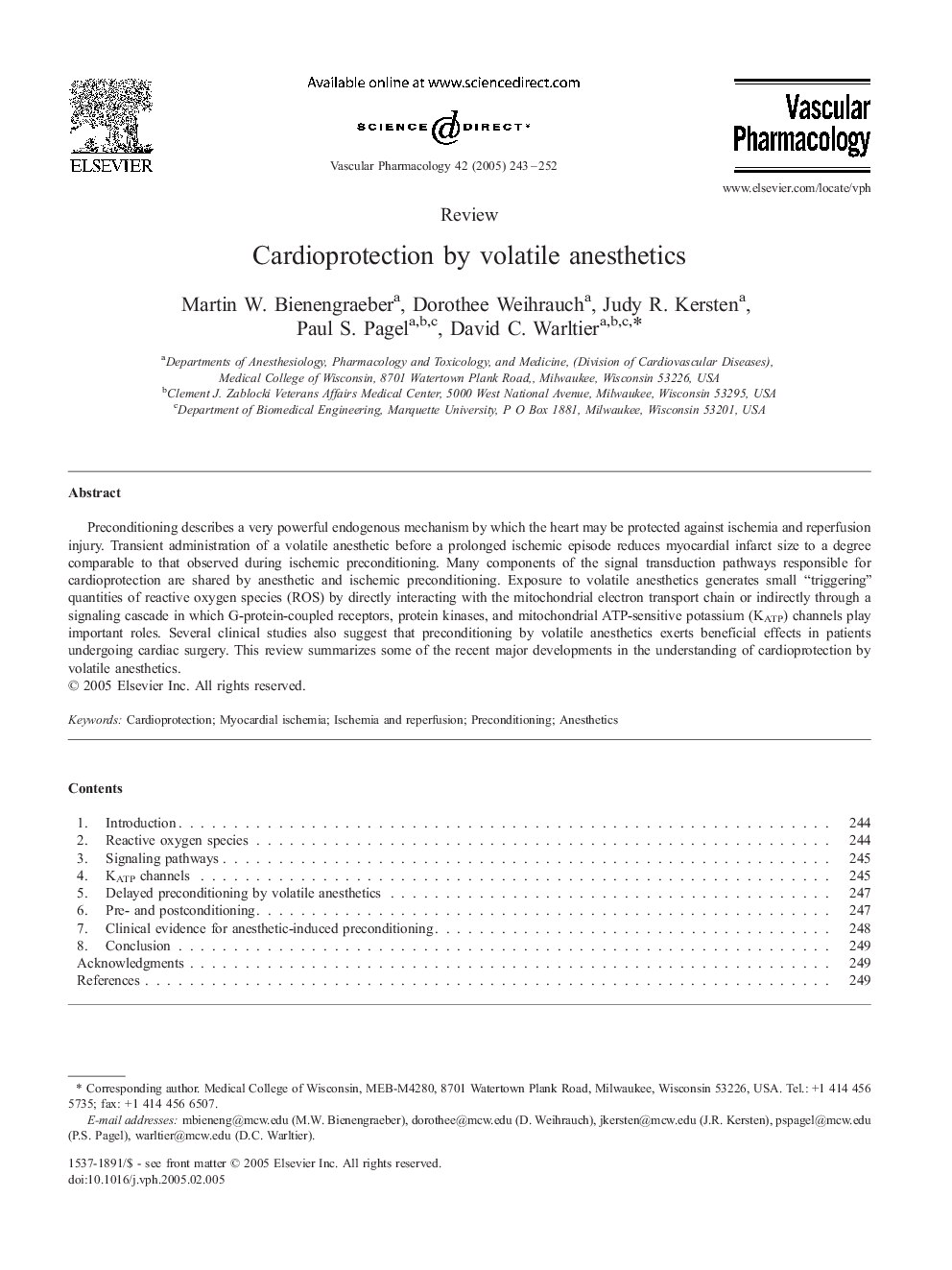| Article ID | Journal | Published Year | Pages | File Type |
|---|---|---|---|---|
| 9020832 | Vascular Pharmacology | 2005 | 10 Pages |
Abstract
Preconditioning describes a very powerful endogenous mechanism by which the heart may be protected against ischemia and reperfusion injury. Transient administration of a volatile anesthetic before a prolonged ischemic episode reduces myocardial infarct size to a degree comparable to that observed during ischemic preconditioning. Many components of the signal transduction pathways responsible for cardioprotection are shared by anesthetic and ischemic preconditioning. Exposure to volatile anesthetics generates small “triggering” quantities of reactive oxygen species (ROS) by directly interacting with the mitochondrial electron transport chain or indirectly through a signaling cascade in which G-protein-coupled receptors, protein kinases, and mitochondrial ATP-sensitive potassium (KATP) channels play important roles. Several clinical studies also suggest that preconditioning by volatile anesthetics exerts beneficial effects in patients undergoing cardiac surgery. This review summarizes some of the recent major developments in the understanding of cardioprotection by volatile anesthetics.
Related Topics
Health Sciences
Medicine and Dentistry
Cardiology and Cardiovascular Medicine
Authors
Martin W. Bienengraeber, Dorothee Weihrauch, Judy R. Kersten, Paul S. Pagel, David C. Warltier,
